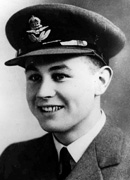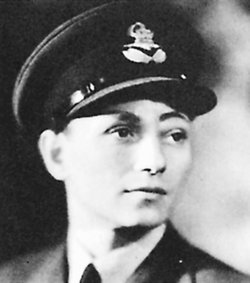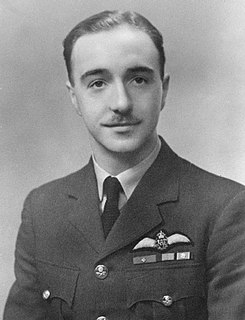 W
WThe Victoria Cross (VC) is a military decoration awarded for valour "in the face of the enemy" to members of armed forces of some Commonwealth countries and previous British Empire territories. It takes precedence over all other postnominals and medals. It can be awarded to a person of any rank in any service and civilians under military command, and is presented to the recipient by the British monarch during an investiture held at Buckingham Palace. It is the joint highest award for bravery in the United Kingdom with the George Cross, which is the equivalent honour for valour not "in the face of the enemy". The VC has been awarded on 1356 occasions to 1353 individual recipients.
 W
WArthur Louis Aaron VC, DFM was a Royal Air Force pilot and an English recipient of the Victoria Cross, the highest award for gallantry in the face of the enemy that can be awarded to British and Commonwealth forces. He had flown 90 operational flying hours and 19 sorties, and had also been awarded posthumously the Distinguished Flying Medal.
 W
WWilliam George "Billy" Barker, was a Canadian First World War fighter ace and Victoria Cross recipient. He is the most decorated serviceman in the history of Canada.
 W
WCyril Joe Barton, VC was a Second World War bomber pilot in the Royal Air Force who received the Victoria Cross, the highest award for gallantry in the face of the enemy that can be awarded to British and Commonwealth Armed Forces.
 W
WIan Willoughby Bazalgette, was a Canadian-British pilot in the Royal Air Force during the Second World War. On 4 August 1944, while piloting an Avro Lancaster in a pathfinder role, Bazalgette and crew flew to Trossy St. Maximin in France to mark a V-1 flying bomb storage cave. Bazalgette's Lancaster was severely damaged by flak prior to arrival at the target and quickly set on fire. Despite the condition of his aircraft, Bazalgette continued to the target and accurately dropped his markers. After completing the task, Bazalgette ordered his crew to bail out, however, two members of the crew were wounded and unable to jump. Rather than saving himself and leaving the two men to die, Bazalgette attempted to land the burning plane to save his two crew members. Bazalgette landed the plane, but it exploded almost immediately upon alighting, killing all three airmen. For his actions, Bazalgette was posthumously awarded the Victoria Cross.
 W
WAndrew Frederick Weatherby (Anthony) Beauchamp-Proctor, was a South African airman and a recipient of the Victoria Cross, the highest award for gallantry in the face of the enemy that can be awarded to British and Commonwealth forces. He was South Africa's leading ace of the First World War, being credited with 54 aerial victories.
 W
WKenneth Campbell, was a Scottish airman who was posthumously awarded the Victoria Cross for an attack that damaged the German battlecruiser Gneisenau, moored in Brest, France, during the Second World War.
 W
WGeoffrey Leonard Cheshire, Baron Cheshire, was a highly decorated Royal Air Force (RAF) pilot and group captain during the Second World War, and a philanthropist.
 W
WAir Commodore Sir Hughie Idwal Edwards, was a senior officer in the Royal Air Force, Governor of Western Australia, and an Australian recipient of the Victoria Cross, the highest decoration for gallantry "in the face of the enemy" that can be awarded to members of the British and Commonwealth armed forces. Serving as a bomber pilot in the Royal Air Force (RAF), Edwards was decorated with the Victoria Cross in 1941 for his efforts in leading a bombing raid against the port of Bremen, one of the most heavily defended towns in Germany. He became the most highly decorated Australian serviceman of the Second World War.
 W
WDonald Edward Garland, VC was a bomber pilot in the Royal Air Force and a recipient of the Victoria Cross, the highest award for gallantry in the face of the enemy that can be awarded to British and Commonwealth forces.
 W
WWing Commander Guy Penrose Gibson, was a distinguished bomber pilot in the Royal Air Force during the Second World War. He was the first Commanding Officer of No. 617 Squadron, which he led in the "Dam Busters" raid in 1943, resulting in the breaching of two large dams in the Ruhr area of Germany. He was awarded the Victoria Cross, the highest award for gallantry in the face of the enemy that can be awarded to British and Commonwealth forces, in the aftermath of the raid in May 1943 and became the most highly decorated British serviceman at that time. He completed over 170 war operations before dying in action at the age of 26.
 W
WThomas Gray, VC was a British airman and a recipient of the Victoria Cross, the highest award for gallantry in the face of the enemy that can be awarded to British and Commonwealth forces.
 W
WJohn Hannah, VC was a Scottish airman and a recipient of the Victoria Cross, the highest award for gallantry in the face of the enemy that can be awarded to British and Commonwealth forces.
 W
WNorman Cyril Jackson VC was a sergeant in the Royal Air Force (RAF) who earned the Victoria Cross during a Second World War bombing raid on Schweinfurt, Germany in April 1944.
 W
WWing Commander Roderick Alastair Brook Learoyd, VC was a Royal Air Force bomber pilot and recipient of the Victoria Cross, the highest award for gallantry in the face of the enemy that can be awarded to British and Commonwealth forces.
 W
WWing Commander Hugh Gordon Malcolm, VC was a Scottish airman and a recipient of the Victoria Cross, the highest award for gallantry in the face of the enemy that can be awarded to British and Commonwealth forces.
 W
WEdward Corringham "Mick" Mannock was a British flying ace in the Royal Flying Corps and Royal Air Force during the First World War. Mannock was a pioneer of fighter aircraft tactics in aerial warfare. At the time of his death he had amassed 61 aerial victories, making him the fifth highest scoring pilot of the war.
 W
WLeslie Thomas Manser, VC was a British bomber pilot and a recipient of the Victoria Cross, which was awarded posthumously following an attack on the German city of Cologne.
 W
WAlan Arnett McLeod, VC was a Canadian soldier, aviator, and a recipient of the Victoria Cross, the highest award for gallantry in the face of the enemy that can be awarded to British and Commonwealth forces. McLeod served as a pilot in the Royal Flying Corps and later the Royal Air Force during the First World War.
 W
WJohn Dering Nettleton, VC was a Rhodesian officer in the Royal Air Force (RAF) during the Second World War. He is most famous for leading the Augsburg raid, a daylight attack against the MAN U-boat engine plant in Augsburg on 17 April 1942. For his role in this mission he was awarded the Victoria Cross, the highest award for gallantry in the face of the enemy that can be awarded to British and Commonwealth forces.
 W
WWing Commander Eric James Brindley Nicolson, was a fighter pilot in the Royal Air Force and a recipient of the Victoria Cross, the highest award for gallantry in the face of the enemy that can be awarded to British and Commonwealth forces.
 W
WWilliam Reid was a Scottish recipient of the Victoria Cross, the highest and most prestigious award for gallantry in the face of the enemy that can be awarded to British and Commonwealth forces. He earned his Victoria Cross as a pilot in the Royal Air Force Bomber Command during the Second World War.
 W
WSquadron Leader Arthur Stewart King Scarf, VC was a Royal Air Force pilot and a recipient of the Victoria Cross, the highest award for gallantry in the face of the enemy that can be awarded to British and Commonwealth forces.
 W
WGeorge Thompson VC was a Scottish recipient of the Victoria Cross, the highest and most prestigious award for gallantry in the face of the enemy that can be awarded to British and Commonwealth forces.
 W
WAir Commodore Ferdinand Maurice Felix West, was a senior Royal Air Force officer, aviator, and an English recipient of the Victoria Cross, the highest award for gallantry in the face of the enemy that can be awarded to British and Commonwealth forces.